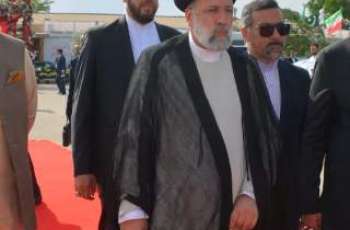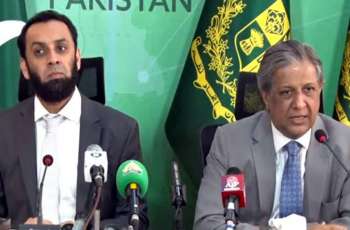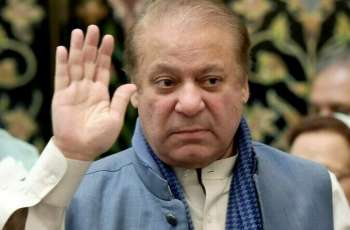In a survey released by Transparency International, Shehbaz Sharif was voted honest by 49% of the respondents, followed by Nawaz Sharif, at 40% and Imran Khan at 26% and Asif Zardari at 1%
Islamabad(Pakistan Point News - 22nd Feb, 2018 ) In a survey released by Transparency International, Shehbaz Sharif was voted honest by 49% of the respondents, followed by Nawaz Sharif, at 40% and Imran Khan at 26% and Asif Zardari at 1%. The figures about government’s role in eradication of corruption were also released, PMLN outperformed other parties in reducing corruption and ensuring transparency. results covered a time span of 3 decades, and reviewed all the governments in between.
Corruption Perception Index (CPI) Score of Pakistan during PMLN led government during last five years, has continuously improved. In 2012, Pakistan’s CPI was 27/100, which has increased to 32/100 in 2017. Whereas CPI score of many developed and developing countries has drastically decreased. When PPP left, Pakistan’s rank from the bottom was 36 and now Pakistan’s number has reached 64 from bottom, government has gone a long way, similarly it improved in 1997 and 1998, at 5 and 15 respectively, which was 2 in 1996 during PPP led government and 13 in 1999 during Martial law.
Confidence in the leadership and the promises made have allowed a favorable enabling environment for investment and public private partnerships. Despite political protests and demonstrations, specially at the start of the term, Pakistan has been able to do well on the Stock Exchange and in terms of market competitiveness internationally. At the Federal level and in Punjab, international contractors have been involved in mega projects across public transport, health and power generation in addition to many others, worth billions of rupees, with very few reports on corruption within the contracts and immediate investigations into any potential allegations.
This has in fact been commended by leaders of China and Turkey as well (Governing the Ungovernable, Dr. Ishrat Hussain) which goes to show that there is confidence in the ability of Punjab and Pakistan as a whole to commission and complete contracts without corruption. The role of the Punjab Government in exploring public private partnerships such as outsourcing, has also facilitated transparency. It is believed that the private sector is able to manage funds more productively, aggressive efforts to improve efficiency of the market structure beyond rigid government architecture is therefore commended and builds faith in the fact the government is trying to bridge the gaps identified.
The existence of public sector companies to innovate service delivery is another factor that supports this. These section 42 companies mimic private sector companies, and report to a board of qualified technocrats, experts, academics and government officials so that there is an added layer of accountability to the departments, further transforming the modes of governance. Similarly, increases in revenue and savings which are now more widely reported as well have helped society view the government as transparent or at least moving in that direction.
This includes the role of improved public procurement, particularly through technological interventions, strong negotiations and centralized procurements where Government has reported savings of billions of rupees. An example in this regard is PKR 682 billion saved in 12 mega projects in Punjab in last 5 years. This includes power plants, Orange Line Metro Train, Metro buses, Chiniot iron ore deposits and Punjab Safe Cities etc. Moreover, the increase in taxation revenue at a provincial level such as the increase collection of GST by the Punjab Revenue Authority has improved perceptions.
Social sector reforms in Health, Education, Water, Sanitation and social protection has increased transparency particularly through the increased accountability mechanisms. In education, Ghost schools have almost entirely been eradicated in Punjab which is continuously monitored, teachers are hired purely on merit, healthcare funds are also being utilized effectively at a district level through the Health Councils and the drug control regime has an effective mechanism to remove and penalize counterfeit medicines.
Members of society are also told that budget allocations have increased with underutilization massively reduced over the years for the social sectors. The Land Reforms in Punjab have been appreciated by international partners like the World Bank. These reforms and their reporting has allowed for greater transparency and improved perceptions of the work being undertaken. Ease and accessibility of information is another reason that transparency has improved.
Multiple helplines for different interventions and departments exist, people are able to contact departments with queries regarding service provision; this dissemination of information has also affected the perception of governance in a positive light. The existence of citizen feedback models such as through the Punjab Information Technology Board have also allowed for closer coordination with citizens; not only do people feel important that their opinion is being taken into consideration but their feedback is actually taken by the departments to make corrective action.
Technological advancements and open access websites reporting service delivery data, such as that for education, immunization, land records and others are some of the factors that have brought citizens closer in their opinion to what they think the government is doing.
Transparency International’s Corruption Perception Index (CPI) ranks countries by their perceived level of corruption. The index for Pakistan is based on data from 8 most credible sources:
1.
World Banks’ Country Policy and Institutional Assessment
2.Varieties of Democracy (V-Dem) Project
3.World Economic Forum Executive Opinion Survey (EOS)
4.Global Insight Country Risk Ratings
5.Economist Intelligence Unit Country Risk Ratings
6.Bertelsmann Foundation Transformation Index
7.World Justice Project Rule of Law Index
8.Political Risk Services International Country Risk Guide




